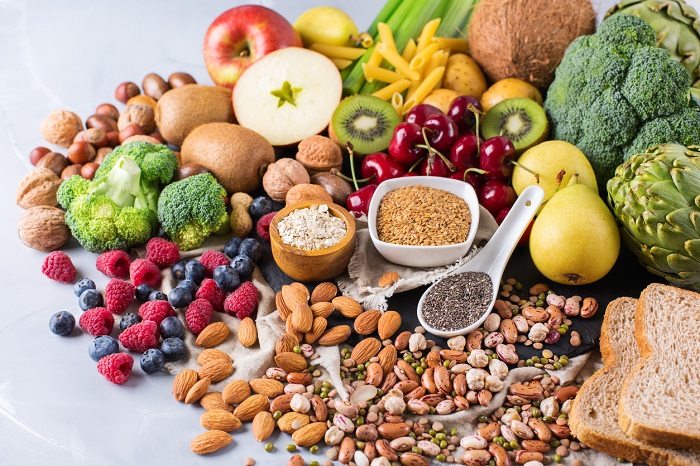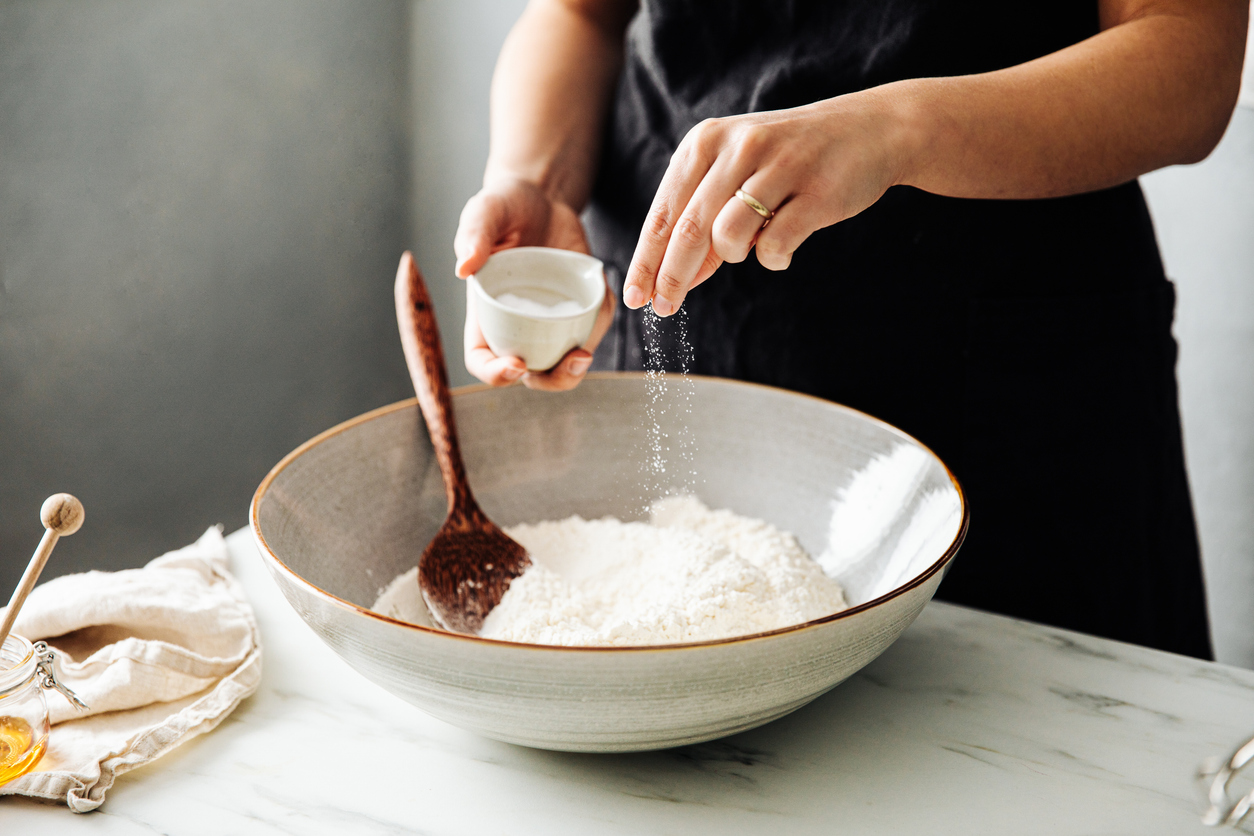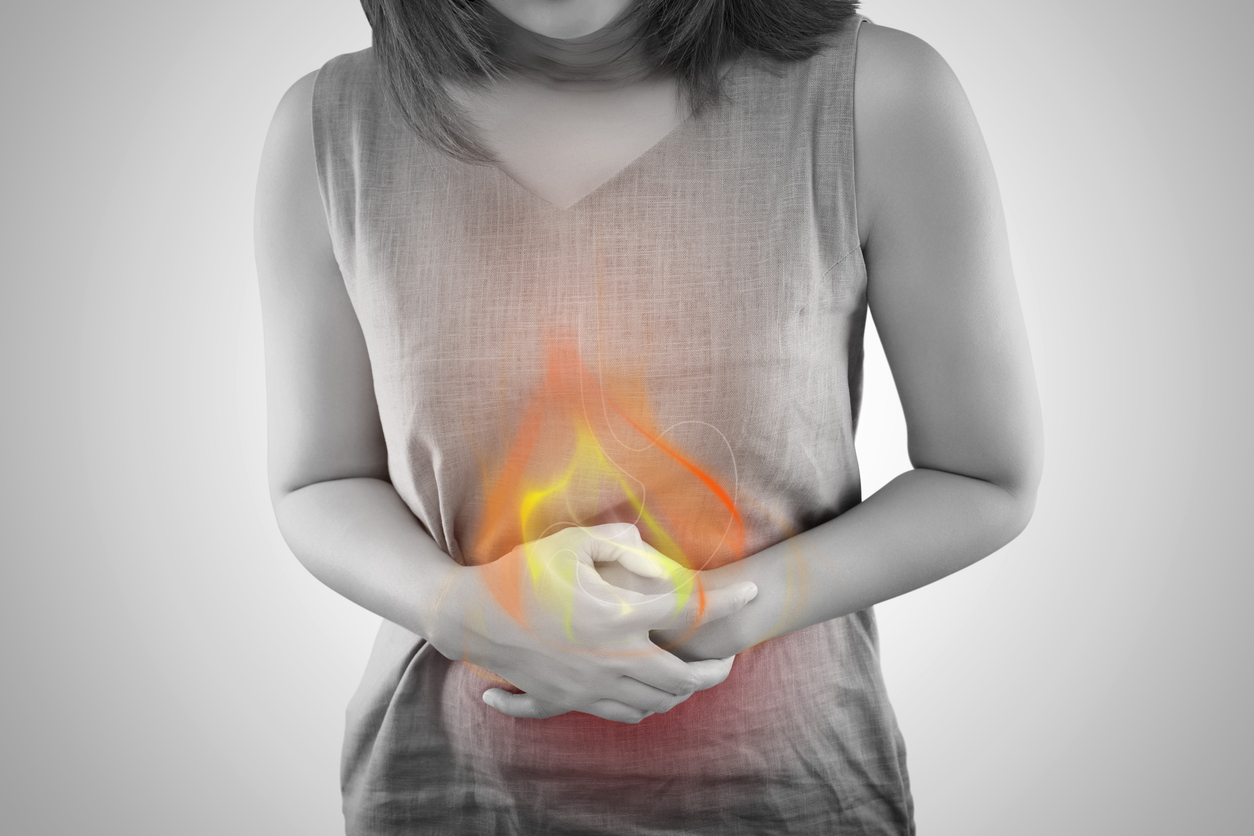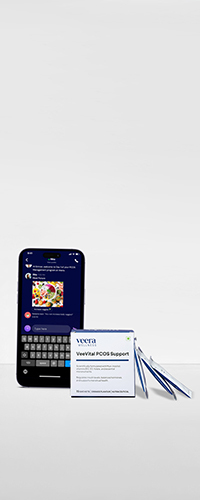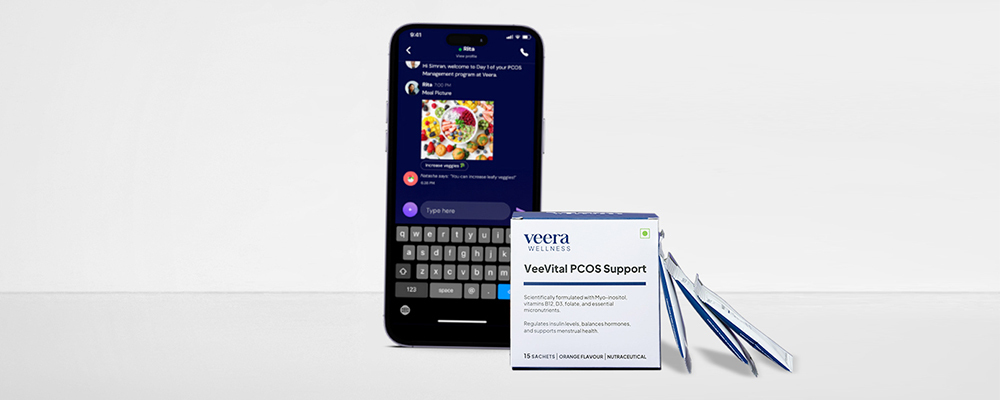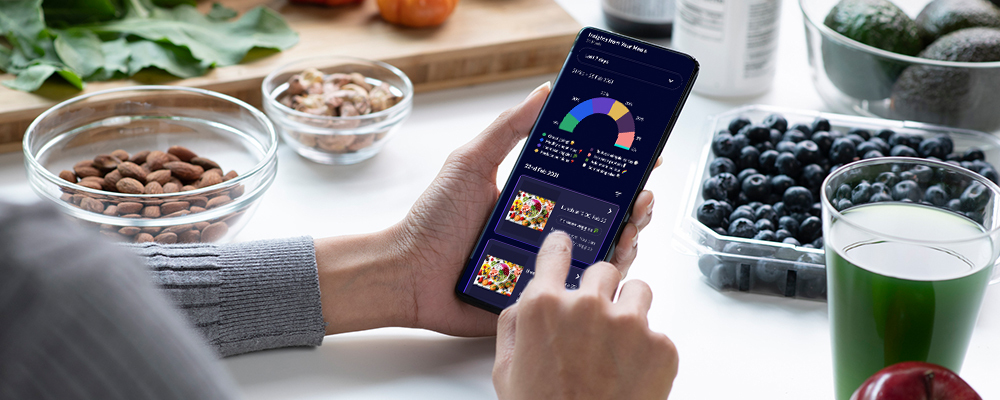In Indian households, flour holds a central position, as chapatis form a fundamental component of Indian cuisine. Chapatis or rice are typically the primary staples consumed, often twice daily in many households. While chapatis offer essential carbohydrates and energy, various types of flour or atta can be utilized to make our meals more nutritious and diet-friendly. Consequently, by incorporating flours blended with cereals and grains into our staple diet, which is high in fiber and low in calories, we can access a wealth of traditional nutritional benefits.
Understanding Weight Loss and PCOS
Losing weight can be particularly challenging for individuals with Polycystic Ovarian Syndrome (PCOS), an endocrine disorder affecting hormonal balance. Hormones play a pivotal role in various bodily processes like weight regulation, appetite control, energy utilization, stress responses, and more. The intricate interplay of these hormonal fluctuations complicates weight management for those with PCOS, presenting unique hurdles to overcome in the pursuit of a healthier lifestyle.
Despite ongoing research efforts, there’s still much to unravel about how PCOS intricately intersects with weight loss difficulties. Scientists continue to investigate the multifaceted nature of PCOS, striving to uncover its underlying causes and devise optimal treatment strategies. Nevertheless, evidence suggests that even modest weight loss can significantly ameliorate PCOS symptoms. Dr. Ayazo emphasizes the following steps to navigate the journey toward improved health:
Step 1: Patience and Persistence
Recognizing that weight loss progress may be gradual and occasionally frustrating, it’s crucial to remain patient and steadfast in your efforts. While visible changes on the scale might take time, embracing a healthy lifestyle yields numerous benefits beyond weight reduction. Even incremental improvements in dietary choices and physical activity levels can mitigate long-term health risks associated with PCOS, such as diabetes and cardiovascular diseases.
Step 2: Regular Exercise
Engaging in regular physical activity, although potentially challenging for individuals with PCOS, remains integral to overall well-being and weight management. While weight loss may proceed at a slower pace compared to those without PCOS, exercise offers holistic benefits, alleviating various PCOS symptoms and enhancing overall quality of life. To facilitate adherence to an active lifestyle, exploring enjoyable activities, establishing consistent routines, and acknowledging the value of even brief bouts of movement in promoting health are advisable.
Step 3: Balanced Nutrition
Rather than adhering to a one-size-fits-all diet, focusing on balanced nutrition tailored to individual needs proves more effective in supporting weight loss efforts. Emphasizing protein, vegetables, and healthy fats while moderating sugar and carbohydrate intake can help stabilize blood sugar levels, particularly relevant for individuals with PCOS prone to insulin resistance. Incorporating dietary strategies such as prioritizing protein and vegetables, opting for whole-grain alternatives, and developing coping mechanisms for managing cravings can facilitate sustainable dietary changes.
Step 4: Avoid Extremes
Resisting the allure of extreme dietary restrictions or excessive exercise regimens is paramount for safeguarding overall health and promoting sustainable weight loss. Extreme calorie deficits can precipitate nutritional deficiencies and metabolic adaptations that hinder long-term weight management. Similarly, overexertion poses risks of injury and may undermine well-being rather than fostering sustainable progress. Opting for a balanced approach, characterized by gradual, steady adjustments, offers a more sustainable path toward lasting results.
Step 5: Medication Consideration
While lifestyle modifications form the cornerstone of PCOS management, medications may complement these efforts in certain cases. Blood sugar-lowering medications like Metformin can help mitigate insulin resistance, reducing the risk of diabetes. Oral contraceptives aid in hormone regulation, addressing symptoms such as irregular periods and excess hair growth. Additionally, weight management medications may be prescribed to augment lifestyle interventions for individuals struggling to achieve desired outcomes through diet and exercise alone.
An Introduction to the Indian Diet
Overview of the Indian Diet
- Rapid Nutritional Transition: India faces a shift towards excessive consumption of calories, saturated fats, trans fats, simple sugars, and salt alongside low fiber intake. This trend, coupled with sedentary lifestyles, contributes to rising rates of obesity, diabetes, metabolic syndrome, and cardiovascular disease (CVD).
- Dietary Disparities: Comparing dietary risks within South Asian countries reveals a high carbohydrate, saturated fat, and trans fat intake, with notable variations between affluent and rural populations. These imbalances are linked to insulin resistance, diabetes, dyslipidemia, and heightened CVD risk, particularly prevalent among Asian Indians and South Asians.
- Vegetarian Preferences: Indian dietary habits often lean towards vegetarianism, featuring high saturated fat dairy and trans fat-rich fried foods. The preference for ghee amplifies trans fat consumption, while reduced omega-3 fatty acid intake, typical in vegetarian diets, may impact cardiovascular health negatively.
- Cultural Dietary Practices: Religious beliefs and culinary traditions shape dietary patterns, with minimal beef consumption due to sacred beliefs. Cultural barriers, such as insufficient fruit and vegetable intake and cooking methods impacting nutrient retention, hinder efforts to mitigate CVD risk.
- Consensus Dietary Guidelines: Recent recommendations emphasize reducing carbohydrate intake, opting for complex carbohydrates, increasing fiber consumption, limiting saturated and trans fats, and moderating salt and sugar intake. Despite widespread vegetarianism, South Asians exhibit lower fiber intake and consume less beneficial n-3 PUFA and MUFA, contributing to CVD risk. Additionally, studies highlight associations between carbohydrate intake and lipid profiles, underscoring the importance of dietary modifications for CVD prevention.
Different Types of Indian Flours
Flour holds a central position in Indian cuisine, serving as a cornerstone ingredient in a plethora of dishes. The rich tapestry of Indian culinary traditions is reflected in the diverse array of flours utilized across different regions of the country. From the ubiquitous wheat flour to lesser-known millet flours, India offers a wide spectrum of options to accommodate its varied culinary heritage.
Wheat Flour (Atta)
Wheat flour, commonly known as “Atta,” stands as the predominant type of flour in India, serving as the primary component in crafting chapatis, parathas, and assorted Indian breads.
Rice Flour
Rice flour holds prominence in South India, featuring prominently in traditional dishes such as dosa and idli, and serving as a thickening agent in gravies and soups.
Gram Flour (Besan)
Derived from chickpeas, besan is a versatile flour integral to dishes like pakoras, bhajis, and the beloved snack, sev.
Millet Flours
India boasts an array of millet-based flours, including bajra flour, jowar flour, and ragi flour, commonly utilized in regions where these grains are cultivated.
Multigrain Flour
Combining various grains like wheat, oats, and millet, multigrain flour offers a nutritious option packed with diverse nutrients.
Sorghum Flour (Jowar)
Gluten-free and nutrient-rich, jowar flour finds its place in traditional Indian flatbreads like bhakri.
Buckwheat Flour (Kuttu)
Frequently consumed during fasting periods, buckwheat flour is used to prepare dishes like kuttu ki roti and kuttu ke pakode.
Amaranth Flour (Rajgira)
A popular choice during Navratri fasting, rajgira flour is utilized in creating puris and ladoos.
Ragi Flour
A staple in South India, ragi flour, derived from finger millet, is employed in crafting dosa, idli, and ragi mudde.
Bajra Flour
Prevalent in Rajasthan and Gujarat, bajra flour is a key component in dishes like rotis and khichdi.
What Flour Is the Best for Losing Weight?
-
Sorghum:
Sorghum, also known as Jowar, is a gluten-free flour packed with dietary fiber, iron, and antioxidants. Rich in protein, calcium, copper, zinc, phosphorus, potassium, and vitamin B, it offers numerous health benefits. These include blood sugar regulation, heart health promotion, and digestive relief. With its low-calorie content, it’s favored by Weight Watchers and is particularly recommended for those with diabetes.
-
Pearl Millet:
Pearl Millet, or Bajra, is a popular gluten-free flour abundant in protein, fiber, magnesium, iron, and phosphorus. It aids in preventing overeating and is beneficial for diabetics and individuals aiming for weight loss due to its blood sugar-controlling properties. Additionally, Bajra helps lower cholesterol, improves digestion, and offers protection against certain cancers.
-
Finger Millet:
Finger Millet, commonly known as Ragi, is another gluten-free option rich in amino acids and fiber. It aids weight loss by reducing appetite, prevents obesity, enhances digestion, and boosts energy levels. Ragi is an excellent calcium source, for strengthening bones, and it’s recommended for diabetic patients for blood sugar regulation. High in iron, it’s also beneficial for lactating mothers to enhance milk production.
-
Almond:
Almond flour is celebrated as a top choice for weight loss, low in carbs yet high in proteins, calcium, magnesium, vitamin E, and omega-3 unsaturated fats. Gluten-free and low in phytic acid, almond flour is nutrient-dense and offers a nutty flavor, making it easy to incorporate into various dishes.
-
Gram:
Gram flour, or besan, aids weight loss due to its low-calorie count, high nutrient content, and abundance of fiber and protein, which manage appetite effectively. Moderation in consumption promotes balanced blood sugar, strengthens the heart, and offers anticancer properties. Combining gram flour with wheat can yield significant weight loss results in a short time.
-
Buckwheat:
Buckwheat flour, also known as kuttu flour, aids digestion, promotes healthy skin, and supports weight loss with its low-calorie and high-protein, antioxidant content. Rich in fiber and micronutrients like manganese, magnesium, copper, iron, and phosphorus, it benefits blood sugar control and heart health. Buckwheat exhibits anti-inflammatory, prebiotic, and anticancer properties, contributing to overall wellness.
-
Water Chestnut:
Water chestnut, or singhara, is a potent antioxidant with antibacterial, antiviral, and anticancer effects. Its high fiber content promotes satiety without excess calorie intake, supporting digestive and spleen health. Beneficial for combating weariness, bad taste, insomnia, and potential cancerous tissues, water chestnut is a versatile and healthful addition to the diet.
Healthy Flour Recipes for Weight Loss
Ragi soup
Ragi soup offers a delightful and nutritious option during the ragi season. This wholesome dish satisfies cravings without adding unnecessary calories, making it an ideal choice for maintaining health and satiety.
Begin by boiling water in a deep pan and adding onion, garlic, carrots, cauliflower, and green peas. Allow it to simmer for 10 minutes. Heat oil in a separate pan, add the tempering ingredients, then incorporate them into the soup. Next, add milk and ragi flour dissolved in plain water, allowing it to simmer for an additional 10 minutes. Garnish with chopped coriander and serve piping hot.
Jowar upma
Ingredients
- 2 tsp refined oil
- 1 tsp urad dal
- 1 cup jowar flour
- 1 tsp mustard seeds
- 1/4 tsp asafoetida
- 1/2 cup chopped onion
- 1/2 cup green peas
- 2 tbsp chopped coriander leaves
- 6 curry leaves
- 1/2 cup semolina
- 2 tsp chilli garlic paste
- 1/2 tsp salt
- 2 cup water
In a deep pan, heat oil over medium flame. Add mustard seeds and urad dal, allowing them to sizzle. Followed by adding asafoetida and curry leaves, and sauté briefly. Then, incorporate chopped onions and sauté for another minute. Add semolina and jowar flour, stirring constantly, and cook for an additional 2 minutes. Introduce green peas, chili garlic paste, chopped coriander, and salt to taste, mixing thoroughly. Pour in water and stir well to combine. Allow it to cook until the water is absorbed. Serve hot.
Consult Veera’s Doctors
Veera’s nutritionists are highly organized, professional, and self-motivated individuals with a deep passion for nutrition and the well-being of people, particularly women. We acknowledge the challenges of balancing various aspects of life while silently battling pain or illness internally, even when outwardly appearing fine. Our approach centers on fostering a positive relationship with food, mind, and body, emphasizing love, understanding, and holistic well-being.
Learn More With Veera
Begin your journey to a healthier, happier you! Our tailored weight loss program offers lasting habits, delicious meal plans, and expert guidance. Enjoy mindful eating with chef-prepared, nutritious meals and personalized exercise routines to boost your metabolism and shape a stronger, fitter body. With support from accredited nutritionists and fitness mentors, you’ll embark on a well-rounded approach. Join a supportive community and celebrate milestones together!

